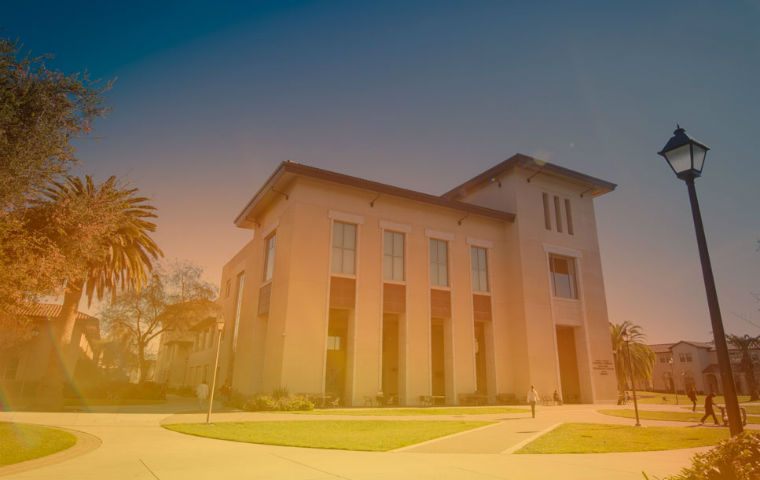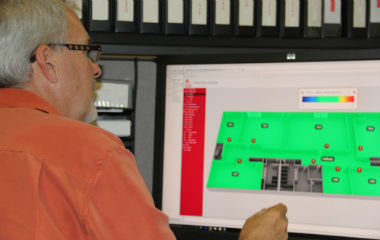
Heat Wave: Campus Fun Facts
Deborah Lohse
Record heat levels bring to mind SCU’s numerous tactics to cool buildings in an energy-efficient manner.
As the Bay Area recovers from a recent heat wave—and braces for the next one— let’s look at the strategic ways SCU has planned ahead to save electricity costs even in scorching weather:
Occupancy-based HVAC.
If rooms aren’t occupied, the University’s smart grid automatically shuts off the air conditioning and lets the temperature rise as high as 80 degrees. This and other tactics can reduce energy use by about 15-30 percent.
Temperature Creep

Chris Watt optimizing AC usage via computer
Utilities director Chris Watt has the power to ratchet up the “normal” temperature of buildings on super hot days. “My job is to save money and make sure the phone doesn’t ring,” he jokes. His logic: the comfort of those in the buillding is highly dependent on the “delta” (or difference) between the heat outside and the temperature inside. So while in the Fall occupants might demand a temperate 70-degree room, he has found that we’re all pretty happy with 73-75 degrees when it’s 90-degrees-plus outside.
Reflective Roofs
Graham Hall’s flat roofs are covered with reflective white roofing, reducing the amount of light that penetrates the building surface. This keeps the entire building cooler during periods of hot weather, reduces solar heat gain and the need for air conditioning, and even avoids transferring heat back into the atmosphere.
Advanced Windows.
Because windows can account for 25-50 percent of a building’s heating and cooling needs, many newer buldings on campus have high-efficiency windows that substantially reduce heat loss/gains, some with multiple panes and insulated frames. Graham Hall, Lucas Hall, and the new law building currently under construction, Charney Hall, have such features, which can make them well over 10 percent more energy efficient than California’s standards for energy efficiency.
Mecho shades and “daylighting”
If you’ve ever sat in Locatelli Student Activity Center and heard the shades start to raise or lower seemingly by magic, that’s “daylighting.” A feature in all new buildings including Charney Hall, such shades detect the light levels in a room and automatically adjust for optimal lighting and shading.
For more information on how SCU strives for energy efficiency, go to www.scu.edu/sustainability.